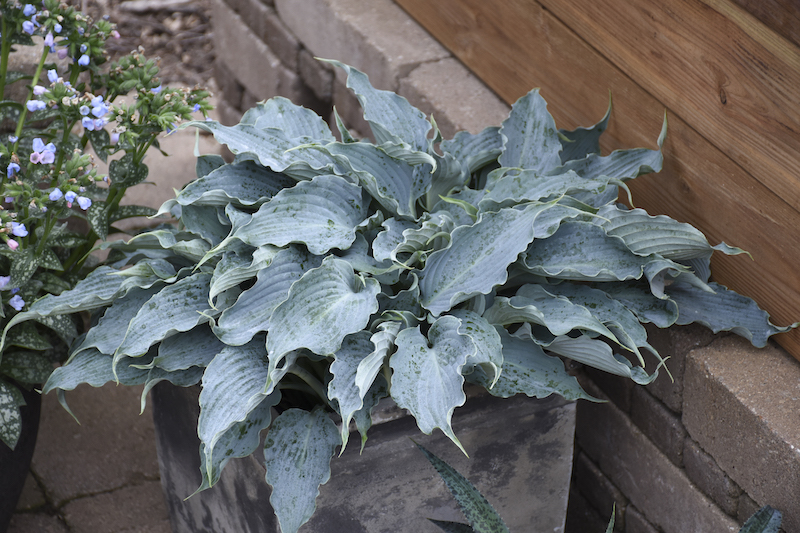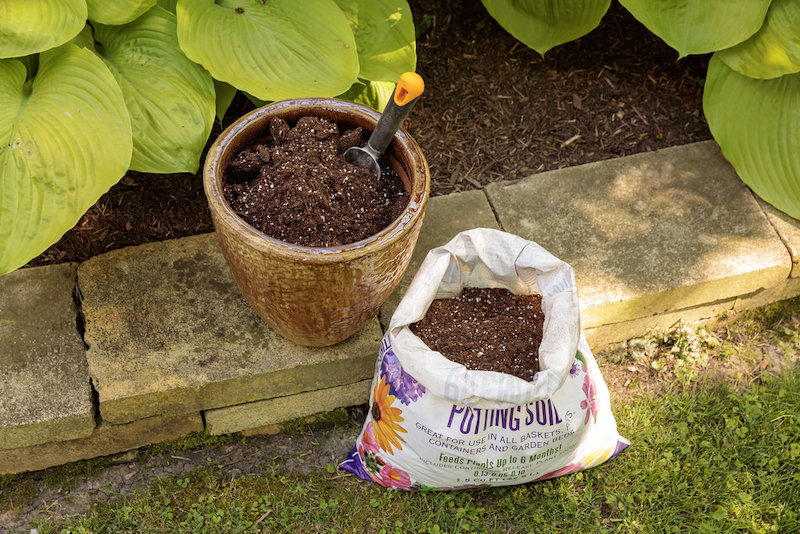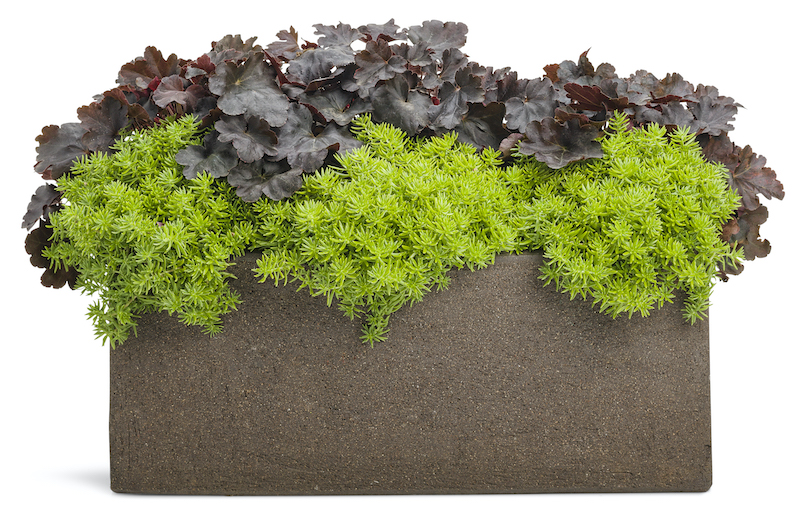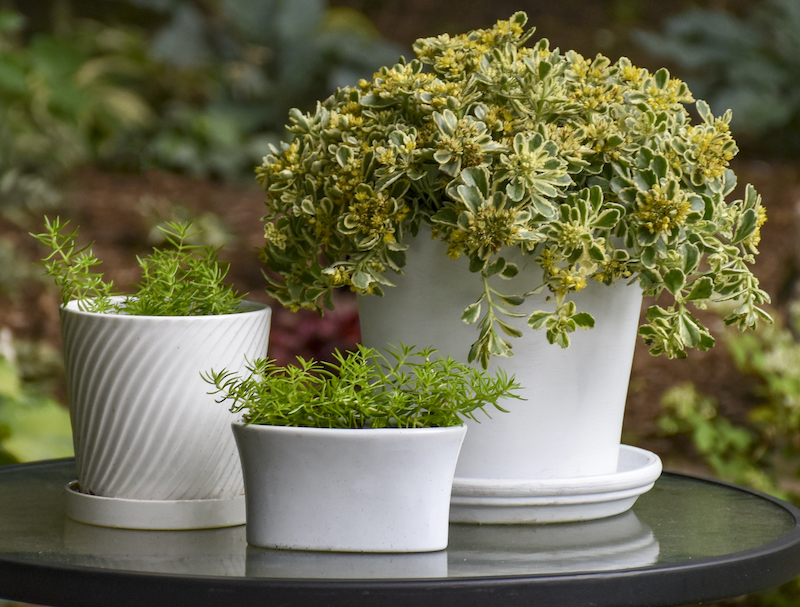Many gardeners think perennials are only suited for large garden borders or mixed beds. Perennials are not usually the go-to choice for containers. This may be true for the largest and most vigorous varieties of perennials. Still, there are plenty of hybrid cultivars and naturally smaller-growing types that grow fabulously in a container. Perennials can be mixed with seasonal annuals to provide almost year-round design opportunities for the deck, patio, or hanging baskets.

Planting Perennials in Pots
Perennials require well-drained soil that retains moisture and has a fair amount of nutrition. A soil-based potting mix is the ideal choice for potting up perennials. Adding perlite or vermiculite will lighten the soil so that it is light enough for a hanging basket yet retains moisture. Because perennial plants are more likely to remain in their containers over winter, they require a container with sufficient drainage to provide air circulation for the root system year-round. Place the pot in the correct light conditions according to the plant label, and ensure that all the plants in the container require the same amount of light and water.
Best Soil For Perennials in Pots
A soil-based potting mix will provide the best growing conditions for most perennials. Acid-loving plants should be planted in a blend formulated for them. Adding compost or granular fertilizer to the potting mix before planting will boost the soil nutrition initially, although repeated watering will eventually leach nutrients from the soil.
Adding a layer of rocks or gravel to the bottom of large pots does not improve drainage and will form a perched water table that does not fully drain. This results in soil that dries at the top and appears to need more watering, while the gravel layer stays wet and may cause root rot issues for your plants. If you are concerned that soil may run out of large drainage holes, place a coffee filter or a piece of window screening over the holes before adding the potting mix. This will allow water to drain while keeping most of the soil in.

Caring For Perennials in Planters
Planters and containers are artificial systems, so the gardener must provide all of the plant's needs. Perennials will thrive in a container garden if the correct light, water, and nutrition needs are met. Keep in mind that most perennials will need to be repotted each year as the roots expand and use up the available nutrients. Each spring, increase the pot size by a couple inches and refresh the potting soil to keep your perennials healthy and vigorous.

Watering Perennials in Pots
Allow all perennials to dry slightly between waterings. The top 2-3 inches of soil should feel dry before you water again. Water until the fluid runs from the drainage holes. If the soil has dried so much that it pulls away from the pot's side, a second watering a few minutes later will help to saturate all of the soil. Overly dry soil repels water and needs a ‘pre-watering’ to rehydrate fully. Always direct the water toward the soil and root zone of the plant. This is where the water is required, not the foliage or flowers. During periods of extreme heat, the containers will need to be checked for water daily. Planters and containers dry out much faster than plants in the ground. A layer of finely shredded leaves, compost, or something more decorative like crushed shells or sea glass can be used as a mulch to keep the soil cooler and damper for longer.
Fertilizing Perennials in Pots
Frequent watering leaches nutrients from the potting soil that must be replaced. You can apply a granular fertilizer that will last up to six weeks with repeated waterings. After that, a diluted liquid fertilizer is easiest to use. Apply a balanced fertilizer for potted plants every 3-4 weeks until the end of summer. Dilute commercial formulas to half the strength recommended on the label to avoid fertilizer burn and a buildup of salts in the potting medium.

Winter Care For Perennials in Pots
Perennials in containers may need extra insulation when grown at the colder end of their growing zone. Containers have much less soil to protect root systems from the winter cold, so treating potted perennials as if they are growing in a colder location is a good idea. Wrapping the pots in layers of burlap or horticultural fabric works for planters that are too large to be moved. Smaller pots should be moved to a more sheltered position that will still receive natural light and rainfall but is out of the path of storms and prevailing winds. Pots made from glazed ceramic or terracotta may flake and crack when exposed to repeated freezing and thawing in the winter and may need to be moved for the winter also.
Growing Perennials Indoors
Few perennials grow well indoors during the winter. Herbs such as oregano, chives, and tarragon can be grown on a very sunny windowsill. Low humidity, low light levels, and excessive heat indoors are the natural enemies of most plants. Providing high humidity with a portable humidifier or daily misting with distilled water can be beneficial. Many perennials are herbaceous and require a period of dormancy over the winter. Without this cold weather exposure, plants grown indoors may perform poorly.
 |
Author Robbin Small - Published 1-12-2022 |
